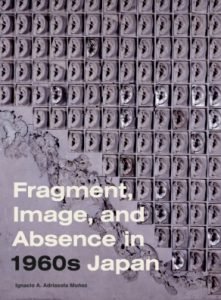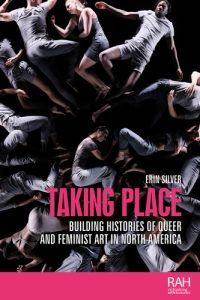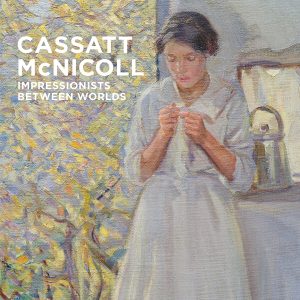WRECK – Volume 5, Number 1

On the Threshold
In recent decades a number of disparities have underscored inadequacies of justice, capital, medical, and sociopolitical conditions that we now must grapple with as our relationship to space and time has been upended. We remain in a space of negotiation within society and are at a threshold for how we want to continue forwards. For this comeback issue of Wreck, we contemplate the generative possibilities of what a threshold is and what comes after it as we mediate this new world that the events of this new decade have ushered in.
In Wreck’s newly revived issue we want to explore this idea of what a “threshold” is and the possibilities of transition as our own journal transitions into a new phase of its history. The space of a threshold and what it represents is difficult to define, especially as the “other side” is often undetermined and in flux. What does it mean to be on a threshold? How have images and other artifacts of visual culture responded to thresholds in present and past times, and how have these been framed historically?
A marker of time, space, and ideas, the threshold is a place of transformation; a marker of metamorphosis from one state to another. However, it can also function as a limit, a border marker where “things” can be held back or pushed through into a different state. How do two vantage points (or things) become thinkable through the space between them? How have thresholds, such as the change of a century, been communicated visually? How do anxieties of the unknown on the other side of a threshold become visualized? What imaginative possibilities do the unknowns of thresholds offer artists? How do thresholds provide spaces of negotiation for artists in times of difficulty?
Issue website: https://ojs.library.ubc.ca/index.php/wreck/issue/view/183068
Cover image: Postcommodity, Repellent Fence / Valla Repelente, 2015, land art installation and community engagement (Earth, cinder block, para-cord, pvc spheres, helium), Douglas, Arizona, U.S.A. and Agua Prieta, Sonora, Mexico, https://postcommodity.com/Repellent_Fence_English.html.
Wreck Logo by Arlee Stewart
Full Issue
Edited by Emily Cadger, Julia Trojanowski, and Tim McCall
Signalling Spanishness: Communicating peninsular Spanish identity in Antonio Rodríguez Beltrán’s “María Luisa de Toledo with her indigenous companion” (c. 1670)
by Hana Nikčević
Abjection in contemporary Black Feminism: An Intersectional Approach in Doreen Garner’s Red Rack of Those Ravaged and Unconsenting
by Yoobin Shin
Brooklyn-based African American artist Doreen Garner (b. 1986)’s recent sculptural assemblage, Red Rack of Those Ravaged and Unconsenting (2018) visually reiterates the history of medical experiment on enslaved Black women’s bodies conducted by white doctors in the United States from 1845 to 1849. Sculpturing the dismembered bodies of Black women in a realistic, yet grotesque manner, Garner expresses her intersectional identity of being a woman and Black in the American contemporary art scene. In this paper, the author argues that through Red Rack of Those Ravaged and Unconsenting, Garner attempts to engage with Julia Kristeva’s notion of abjection to unsettle viewers, typically white male and female, as well as white feminists, by evoking two histories of America: the history of Black slavery in the nineteenth century and the history of feminist art practice in the 1980s. Instead of fully embracing Kristeva’s theory of abjection from the Anglo-feminist perspective which has dominated theoretical discourse on the pursuit of the female subjectivity since the 1980s, Garner rather takes up the limitations that came out from their feminist research into her sculpture to contest her viewers in reading her work of art from the position of contemporary Black feminist.
Spaces Unknown: Articulations of Suburban Normativity and Alterity in James Wan’s Insidious (2010)
by Marcus Prasad
This article explores the representation of the suburban house and the concept of suburbia as a space of social normativity in the American and Canadian context following World War II. I pursue this line of investigation by analyzing a work of horror film that questions and disrupts this distinct space – James Wan’s Insidious (2010). The following reveals the unique means through which this work exposes a decades-long disdain held toward postwar suburban development and its deep ties to normativity by closely examining how Wan represents the space of the home and its subsequent undoing. I thread works of queer theory within my analysis to act as a guiding framework through which the productivity of the film’s represented ulterior space may be read and understood.
Drawing from spatial and temporal theory primarily, I articulate how normativity is formed in the space of the suburbs through structured rhythms, movements, and gestures that become attributed to the heterosexual, white, middle- to upper-class family. This investigation is followed by a methodology that adopts from queer theory a process of estrangement, a deviation from the normative space of the suburbs that seeks to disrupt and challenge existing scripts within dominant social frameworks unique to horror film. As such, this article provides a new method through contemporary horror film may be analyzed, away from canonical or genre prescriptions, and toward the productive potential of spaces considered to be ulterior.
Indigenous Sovereignty and the Border: Postcommodity’s Borderlands
by Kristina Parzen
“The Why of D.I.Y.” in A Handmade Assembly

A publishing project of the Owens Art Gallery and Struts Gallery, A Handmade Assembly publication was initiated in 2020 as the tenth and final iteration of the beloved community gathering. This ambitious book was envisioned as an important continuation of the Assembly, rather than a commemorative volume of past events.
From its beginning in 2011, A Handmade Assembly took a critical look at the intersection of contemporary art and the handmade by bringing people together through workshops, exhibitions, performances, presentations, and symposia. Created in the spirit of what made this annual event so vital, the publication combines critical texts and a variety of interactive artists projects. Designed by the award-winning Lauren Wickware, A Handmade Assembly is a gorgeous, 114-page, hardcover book with contributions from Anthea Black, Bisset + Latour, Emily Falvey, Amanda Fauteux, Paige Gratland, Faye Harnest, Paul Henderson, Julie Hollenbach, Gemey Kelly, Germaine Koh, Hazel Meyer, Geordie Miller, Christiana Myers, Suzie Smith, Tyshan Wright, and Pauline Young.
Germaine Koh: The Why of D.I.Y.
This is an attempt to bring together thoughts about unplanned urban processes arising from need and desire, about play as fundamental to creative practice, and about “doing-it-yourself” as an expression of democratic purpose. What connects these subjects is a will on the part of citizens to be active agents in their lived world.
For more information: https://www.strutsgallery.ca/product-page/a-handmade-assembly
Seeking Assistant Professor in Visual Art (tenure-track)
The Department of Art History, Visual Art and Theory (AHVA) at the University of British Columbia (UBC), Vancouver, invites applications for a tenure-track appointment in visual art at the rank of Assistant Professor. The anticipated start date of employment is as early as July 1, 2024.
The department seeks an individual who pursues studio practice against a strong background of contemporary, art-historical and theoretical concerns.
We welcome applications from individuals working in a wide range of practices from traditional to expanded or post-media art forms. Our department is committed to the understanding that equity and diversity are essential to academic excellence; an open and diverse community fosters the inclusion of voices that have been underrepresented or discouraged. We are interested in a variety of pedagogical approaches and interests, applications from individuals who are qualified to teach courses in expanded sculpture, sound, digital media and/or performance; from the perspectives of queer and trans practices and/or decolonial methodologies are strongly encouraged.
The successful candidate will be expected to maintain an active program of research, exhibition, graduate supervision, undergraduate- and graduate-level teaching and service. A demonstrated record of or potential for innovative pedagogical approaches is considered an asset.
Applicants must possess the following minimum qualifications:
- an MFA degree is preferred; however, in exceptional cases, the equivalent combination of education and professional practice may be considered
- an active national and international exhibition record or alternatively, a significant contribution to an emerging field of practice
- a serious engagement with contemporary art practice, theory and critical discourse
- post-secondary teaching experience or evidence of potential for teaching excellence, and the capacity to teach at all levels from foundation courses to graduate-level seminar and studio courses
- ability to teach and to lead discussions on contemporary art and critical theory with students across all levels
The University of British Columbia, one of the largest and most distinguished universities in Canada, has excellent resources for scholarly research and artistic practice. It is home to the Audain Art Centre, purpose built in 2013. The artistic and intellectual community of AHVA is built on meaningful interaction between faculty and students across the three scholarly streams. We are committed to the belief that the production, exhibition, critical and historical analysis of art are all advanced by the close integration of the specific perspectives and methodologies each stream contributes to our endeavours. Visual art students may pursue an MFA, a BFA, a BA major or minor in visual art, and we are also a participant in the Bachelor of Media Studies program. Our faculty and students benefit from frequent pedagogical and research opportunities in partnership with the internationally recognized Morris and Helen Belkin Art Gallery and Museum of Anthropology here on campus. With its international faculty, the department is committed to a global historical and contemporary analysis of artistic production.
Applicants must submit their application at https://ahva.air.arts.ubc.ca and upload the following in the order listed within a single PDF (max size 15MB):
- letter of application
- detailed curriculum vitae (that includes a listing of relevant publications and exhibitions, including authored works and reviews)
- statement of artistic, research, and teaching philosophies
- evidence of teaching effectiveness (that includes courses taught, teaching evaluations and/or sample course syllabi)
- statement of experience working with a diverse student body and contributions or potential contributions to creating/advancing a culture of equity and inclusion
- URL to (and/or a PDF of) visual documentation of current work
- name, title and affiliation, and contact information of three references
Please note we do not require letters of reference for your initial application. However, your listed references should be willing to provide a letter of reference at a later date should your candidacy progress.
Salary will be commensurate with qualifications and experience. This position is subject to final budgetary approval.
Review of applications will begin on September 21, 2023, and will continue until the position is filled.
We would like to acknowledge that the land on which we are situated is the traditional, ancestral, and unceded territory of the xwməθkwəy̓əm (Musqueam) People.
Equity and diversity are essential to academic excellence. An open and diverse community fosters the inclusion of voices that have been underrepresented or discouraged. We encourage applications from members of groups that have been marginalized on any grounds enumerated under the BC Human Rights Code, including sex, sexual orientation, gender identity or expression, racialization, disability, political belief, religion, marital or family status, age, and/or status as a First Nation, Métis, Inuit, or Indigenous person.
Canadians and permanent residents will be given priority; however, all qualified candidates are encouraged to apply.
2023W1 Visual Art (VISA 340 – 001) Sessional Lectureships
The Department of Art History, Visual Art and Theory (AHVA) invites applications for part-time sessional lecturers.
2023 Winter Term 1 (September 1 to December 31, 2023), Wednesday(s) 9:00 am – 12:00 pm
VISA 340 (001) — Intermediate Photography I
An investigation of approaches to photography and its meaning in the context of contemporary art. The term
theme will be determined by the instructor. B & W, colour and digital production.
A minimum of an MFA is required, and preference will be given to applicants with post-secondary teaching experience and a record that provides evidence of teaching effectiveness. Applicants from both inside and outside UBC are encouraged. The minimum salary for a three-credit course in the Faculty of Arts is currently $7,962.24.
Applicants must submit their application at https://ahva.air.arts.ubc.ca/visa-sessional-lectureship-application/ and upload the following in the order listed within a single PDF (max size 15MB):
- cover letter
- CV, which includes a record of experience and a detailed list of all post-secondary courses taught (course name and number, length, credit value, dates, and teaching responsibilities)
- sample course outline(s)\
- evidence of teaching effectiveness (i.e., teaching evaluations, if available)
Applicants should also arrange to have two confidential reference letters submitted by email to ahva.head@ubc.ca (or have them on file for incumbents). All materials should be received by 9:00 a.m. on Monday, August 7, 2023
For information, please visit www.ahva.ubc.ca
All positions are subject to availability of funds and will be governed by UBC’s “Agreement on Conditions of Appointment for Sessional Faculty Members.” The salary effective July 1, 2021 is $2,654.08 per credit, based off a nine-credit term. Therefore, a regular three-credit course in our department would be remunerated at $7,962.24
Equity and diversity are essential to academic excellence. An open and diverse community fosters the inclusion of voices that have been underrepresented or discouraged. We encourage applications from members of groups that have been marginalized on any grounds enumerated under the B.C. Human Rights Code, including sex, sexual orientation, gender identity or expression, racialization, disability, political belief, religion, marital or family status, age, and/or status as a First Nation, Métis, Inuit, or Indigenous person. All qualified candidates are encouraged to apply; however, Canadians and permanent residents will be given priority.
2023W2 Art History (ARTH 102) Sessional Lectureships
Winter 2023 Term 2 Art History (ARTH) Sessional Lectureships
The Department of Art History, Visual Art and Theory (AHVA) invites applications for part-time sessional lecturers.
2023 Winter Term 2 (January 1 to April 30, 2024), Mondays, 10:00 am to 12:00 pm
ARTH 102 (001) – Crisis and Contradiction in Art and the Built Environment
Concepts and issues critical to the understanding of art and its histories in a global context.
A minimum of a PhD (ABD) in Art History is required, and preference will be given to applicants with post-secondary teaching experience and a record that provides evidence of teaching effectiveness. Applicants from both inside and outside UBC are encouraged. The minimum salary for a three-credit course in the Faculty of Arts is currently $7,962.24.
Applicants must submit their application at https://ahva.air.arts.ubc.ca/arth-sessional-lectureship-applications/ and upload the following in the order listed within a single PDF (max size 15MB):
- cover letter
- CV, which includes a record of experience and a detailed list of all post-secondary courses taught (course name and number, length, credit value, dates, and teaching responsibilities)
- sample course outline(s)
- evidence of teaching effectiveness (i.e., teaching evaluations, if available)
Applicants should also arrange to have two confidential reference letters submitted by email to ahva.head@ubc.ca (or have them on file for incumbents). All materials should be received by 9:00 a.m. on Monday, July 31, 2023.
For information, please visit www.ahva.ubc.ca
All positions are subject to availability of funds and will be governed by UBC’s “Agreement on Conditions of Appointment for Sessional Faculty Members.” The salary effective July 1, 2021 is $2,654.08 per credit, based off a nine-credit term. Therefore, a regular three-credit course in our department would be remunerated at $7,962.24
Equity and diversity are essential to academic excellence. An open and diverse community fosters the inclusion of voices that have been underrepresented or discouraged. We encourage applications from members of groups that have been marginalized on any grounds enumerated under the B.C. Human Rights Code, including sex, sexual orientation, gender identity or expression, racialization, disability, political belief, religion, marital or family status, age, and/or status as a First Nation, Métis, Inuit, or Indigenous person. All qualified candidates are encouraged to apply; however, Canadians and permanent residents will be given priority.
Fragment, Image, and Absence in 1960s Japan

This groundbreaking book examines how the notion of “the object” was transformed in Japanese experimental art during a time of rapid social, economic, and environmental change.
Reviving the legacies of the historical avant-garde, Japanese artists and intellectuals of the 1960s formulated an aesthetics of disaffection through which they sought to address the stalemate of political and aesthetic representation. Ignacio A. Adriasola Muñoz draws from psychoanalytic theories of melancholia to examine the implications of such an approach, tracing a genealogy of disaffection within modernist discourse. By examining the discursive practices of artists working across a wide range of media, and through a close analysis of artwork, philosophical debates, artist theories, and critical accounts, Adriasola Muñoz shows how negativity became an efficacious means of addressing politics as a source for the creative act of undoing.
In examining ideas of the object advanced by artists and intellectuals both in writing and as part of their artwork, this book brings discussions in critical art history to bear on the study of art in Japan. It will be of interest to art historians specializing in modernism, the international avant-garde, Japanese art, and the history of photography.
For more information: https://www.psupress.org/books/titles/978-0-271-09290-4.html
2023W1 Visual Art (VISA) Sessional Lectureships
The Department of Art History, Visual Art and Theory (AHVA) invites applications for part-time sessional lecturers.
2023 Winter Term 1 (September 1 to December 31, 2023)
VISA 390 (001) — Performance Art
VISA 480 (001) — Advanced Seminar I
Course descriptions are available here
A minimum of an MFA is required, and preference will be given to applicants with post-secondary teaching experience and a record that provides evidence of teaching effectiveness. Applicants from both inside and outside UBC are encouraged. The minimum salary for a three-credit course in the Faculty of Arts is currently $7,962.24.
Applicants must submit their application at https://ahva.air.arts.ubc.ca/application-for-visual-art-sessional-lectureships/ and upload the following in the order listed within a single PDF (max size 15MB):
- cover letter
- CV, which includes a record of experience and a detailed list of all post-secondary courses taught (course name and number, length, credit value, dates, and teaching responsibilities)
- sample course outline(s)\
- evidence of teaching effectiveness (i.e., teaching evaluations, if available)
Applicants should also arrange to have two confidential reference letters submitted by email to ahva.head@ubc.ca (or have them on file for incumbents). All materials should be received by 9:00 a.m. on Thursday, June 1, 2023.
All positions are subject to availability of funds and will be governed by UBC’s “Agreement on Conditions of Appointment for Sessional Faculty Members.” The salary effective July 1, 2021 is $2,654.08 per credit, based off a nine-credit term. Therefore, a regular three-credit course in our department would be remunerated at $7,962.24
Equity and diversity are essential to academic excellence. An open and diverse community fosters the inclusion of voices that have been underrepresented or discouraged. We encourage applications from members of groups that have been marginalized on any grounds enumerated under the B.C. Human Rights Code, including sex, sexual orientation, gender identity or expression, racialization, disability, political belief, religion, marital or family status, age, and/or status as a First Nation, Métis, Inuit, or Indigenous person. All qualified candidates are encouraged to apply; however, Canadians and permanent residents will be given priority.
Taking Place: Building Histories of Queer and Feminist Art in North America

Taking Place examines feminist and queer alternative art spaces across Canada and the United States from the late-1960s to the present. It looks at how queer and feminist artists working in the present day engage with, respond to and challenge the institutions they have inherited. Through a series of regional case studies, the book interrogates different understandings of ‘alternative’ space and the possibilities the term affords for queer and feminist artistic imaginaries.
For more information: https://manchesteruniversitypress.co.uk/9780719096419/
